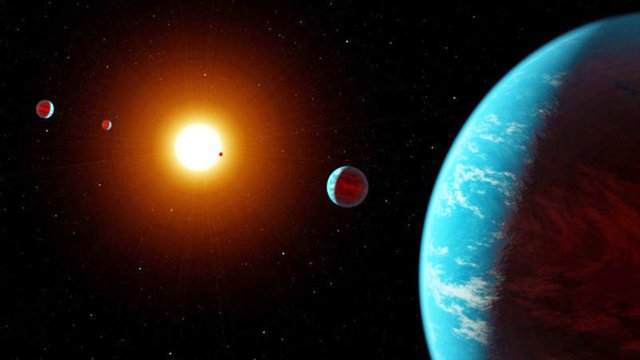Amazing discovery of Five Extrasolar Planets
There seems to be the 6th
This is a big news, planetary systems containing several planets were discovered by amateur college scientists. This planetary system 620 light-years away from this, which includes five extrasolar planets, there is a possibility that the sixth planet may exist.
This planetary system is called "K2-138" because it was discovered during the K2 mission of the Kepler probe. The K2 mission is a mission to find the extrasolar planet which has been done over the past three years. The center star is a K type main sequence star type of orange dwarf type. Which means that it has mass 0.8 times, our sun 0.45 times.
The orbits of the five planets confirmed are relatively close to the main star, and the revolution cycle is about 2.67 days from 2.35 days. Even the most distant planet K2-138f seems to have only one-tenth of the distance between the Earth and the Sun. Everything is a rock and planet, which seems to be 1.6 times to 3.3 times the size of the earth by the length of the radius. It is a mass that is larger than the Earth and is considered a super-earth as being a rock planet.
As all the planets are close to the main star, it seems almost impossible to live in. In addition, as a result of mutual gravitational influence between planets, it seems that the phenomenon called orbital resonance that each revolution cycle becomes a simple integer ratio is occurring.
K2-138 was discovered by Kepler 's and an extra-solar system for exploring the planet using the online research crowdsourcing platform zooniverse.
About Kepler...
A little more about the project, Kepler measures the brightness of a star, but both astronomers in the pro. The world around the world have seen this measurement, there is no place where the brightness of a star is temporarily decreasing. This is because when a large object like a planet passes through the front of the star, as part of the revolution a decrease in the brightness of the star. In the past three years, Kepler recorded data on 287,309 stars. This means that about 10,000 pieces of data are added every few months. This data group called C12 data set is too big for scientists of a small team to examine. It was the solar system outside planetary exploration project.
A project which succeeded with the cooperation of so many amateur scientists. If you plan to find more and more planets in the future, possibly an Earth-like planet... if you imagine it will be exciting, can be read even arxiv.


That's pretty cool, I wonder how long till we have the technology to reach one of these!
I think we need spaceship with a rocket engine which operates fusion technology to reach far planetary systems...
So this might be a stupid question... can we 'do' fusion, but not control it? Or can we just not 'do' fusion yet?
I mean outside of bombs
Beautiful earth
thanks @juborajmollah
Thanks bro
Amazing discovery indeed! I love to study about the planets, the stars, the earth, etc. Thanks for sharing this great news with us! ;)